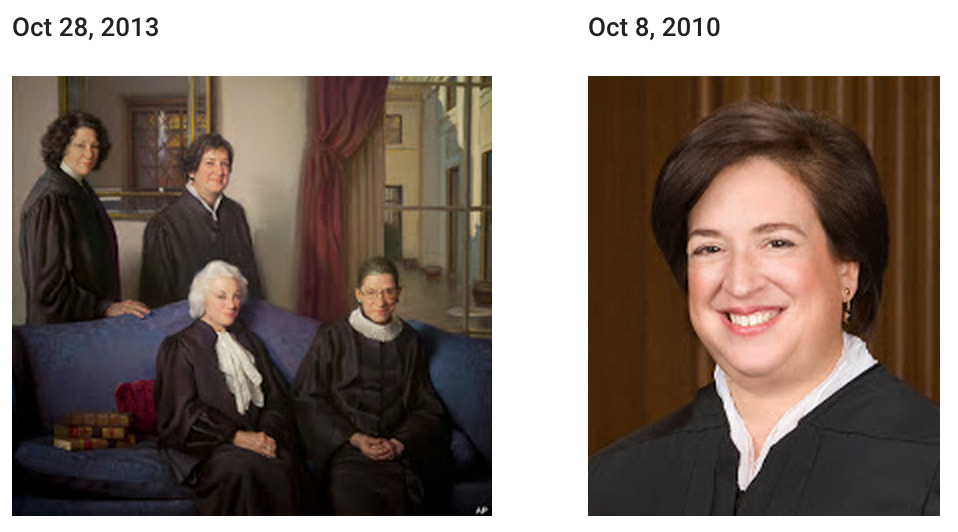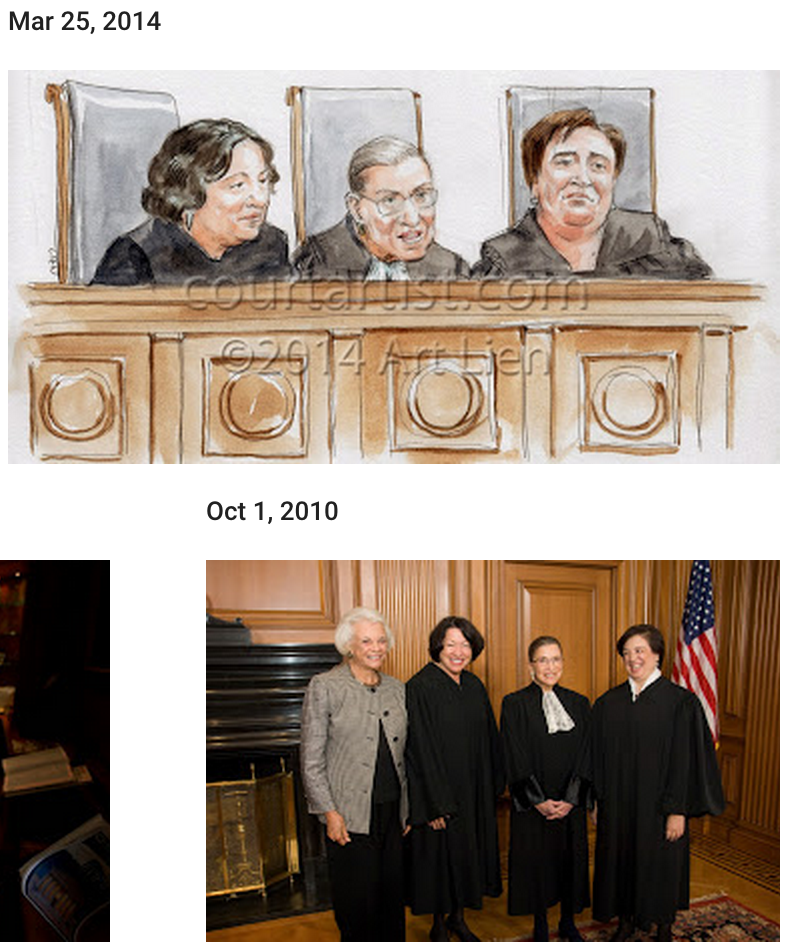Update: After discussions with several colleagues, I realize that my initial reading was not the best reading of the regulation. Please read the below post, then come back up to this update.
The key language–and this is not clear on my first reading–is “statutorily eligible.”
DHS proposes to expand its current provisional waiver process in two principal ways. First, DHS would eliminate current limitations on the provisional waiver process that restrict eligibility to certain immediate relatives of U.S. citizens. Under this proposed rule, the provisional waiver process would be made available to all aliens who are statutorily eligible for waivers of inadmissibility based on unlawful presence and meet certain other conditions.
The only way to read this regulation consistently with the INA is that the phrase “statutorily eligible” refers back only to the statutory authority to issue waivers under 8 U.S.C. 1182(a)(9)(B)(v). In other words, this provision does not expand the category of aliens who can petition for a waiver, as DHS is still bound by the statute. The only thing that this rulemaking changes is who can be used to demonstrate the “extreme hardship.” But this category of relatives is still bound by the statute. Under the statute, a hardship to citizen children (as would be the case with DAPA beneficiaries) would not be sufficient to justify a waiver.
I apologize for any confusion offered by the below analysis. The proposed regulation was not clear with who would be covered, and it took me a few hours before I finally was able to parse the language.
Original Post:
The Obama Administration is expanding the number of aliens who can seek a waiver from a removal requirement by disregarding clear congressional limitations on who is relevant. The Washington Free Beacon has a decent summary, but (sorry) you will have to read this long post to understand exactly what will be changed.
Under 8 USC § 1182(a)(9)(B)(i)(II), an alien who has been “been unlawfully present in the United States for one year or more” is barred from seeking admission until “10 years of the date of such alien’s departure or removal from the United States.” In other words, if an alien is in the United States illegally for more than a year, before applying for what is known as an “adjustment of status,” the alien would have to leave the United States for a decade, and (generally) apply for consular proceedings in his or her home country. This is a significant statutory bar that Congress created to punish those who entered the country unlawfully, and makes it extremely difficult for that person to eventually obtain a Green Card.
Congress crafted a series of exemptions to the so-called “Ten Year Bar” in 8 USC § 1182(a)(9)(B)(iii). Time spent in the United States when an alien was under 18 doesn’t count towards the one-year limit. Further, time spent while as an asylum applicant, as a beneficiary of family unit protection, as a battered woman, or as a victim of severe trafficking, will not count towards the one-year limit. In 8 USC § 1182(a)(9)(B)(iv), Congress allows for tolling if the alien was “lawfully admitted” into the United States (this involves an inspection at the border), filed a “nonfrivolous application” for a change of status, and was not “employed without authorization.” Even then, the tolling is “not to exceed 120 days.”
Most importantly for our purposes is 8 USC § 1182(a)(9)(B)(v), which provides the Attorney General with limited and constrained authority to waive the ten-year bar. It provides:
(v)Waiver The Attorney General has sole discretion to waive clause (i) in the case of an immigrant who is the spouse or son or daughter of a United States citizen or of an alien lawfully admitted for permanent residence, if it is established to the satisfaction of the Attorney General that the refusal of admission to such immigrant alien would result in extreme hardship to the citizen or lawfully resident spouse or parent of such alien. No court shall have jurisdiction to review a decision or action by the Attorney General regarding a waiver under this clause.
There are several requirements, specifically carved out in the statute. First, the discretion only applies to “an immigrant who is the spouse or son or daughter of a United States citizen or of an alien lawfully admitted for permanent residence.” It does not apply to an immigrant who is the parent, sister, brother, cousin, niece, nephew, etc. of a U.S. Citizen. Specifically, Congress disfavors offering status to the parents of U.S. Citizens due to the fact that natural-born citizens receive birthright citizenship under the Fourteenth Amendment. Second, assuming the correct relationship is established, the alien must show the Attorney General how his or her refusal of admission “would result in extreme hardship to the citizen or lawfully resident spouse or parent of such alien.” Again, this only applies to the “spouse or parent,” and not children. Further, “extreme hardship” is one of the highest burdens that must be established in immigration law. This isn’t easy to satisfy.
The Obama Administration’s proposed rulemaking blows up each of these two restrictions on DHS’s power to grant waivers (I understand the Secretary of Homeland Security, and not the Attorney General now exercises this authority). The summary from the rulemaking offers a helpful explanation:
DHS proposes to expand its current provisional waiver process in two principal ways. First, DHS would eliminate current limitations on the provisional waiver process that restrict eligibility to certain immediate relatives of U.S. citizens. Under this proposed rule, the provisional waiver process would be made available to all aliens who are statutorily eligible for waivers of inadmissibility based on unlawful presence and meet certain other conditions. Second, in relation to the statutory requirement that the waiver applicant demonstrate that denial of the waiver would result in “extreme hardship” to certain family members, DHS proposes to expand the provisional waiver process by eliminating the current restriction that limits extreme hardship determinations only to aliens who can establish extreme hardship to U.S. citizen spouses or parents. Under this proposed rule, an applicant for a provisional waiver would be permitted to establish the eligibility requirement of showing extreme hardship to any qualifying relative (namely, U.S. citizen or lawful permanent resident spouses or parents).
The proposed rule disregards the statute in two ways.
First, Congress limited those who can seek waivers to aliens who are the “the spouse or son or daughter of a United States citizen or of an alien lawfully admitted for permanent residence.” Under the proposed rule, any alien can seek a waiver so long as he or she is “statutorily eligible for waivers of inadmissibility based on unlawful presence and meet certain other conditions.” No longer must the alien be the “spouse or son or daughter” of the citizen of LPR. The rule nullifies the language from Congress restricting who can apply for a waiver, as they no longer need to have the citizen-relation.
Second, Congress specified that the alien who is seeking a waiver must show why the refusal of admission “would result in extreme hardship to the citizen or lawfully resident spouse or parent of such alien.” However, under the proposed rule, the alien “would be permitted to establish the eligibility requirement of showing extreme hardship to any qualifying relative (namely, U.S. citizen or lawful permanent resident spouses or parents).” The “extreme hardship” must no longer affect the “spouse or parent,” but applies to “any qualifying relative.” The rule offers an example, such that a “citizen son or daughter”–who is not a “spouse or parent”–could be the one who suffers the “extreme hardship.”
For example, an alien who is the beneficiary of an immediate relative petition filed by his or her U.S. citizen son or daughter—who is not a qualifying relative for purposes of the waiver—could seek a provisional waiver based on extreme hardship that would be suffered by the alien’s LPR spouse.
It is extremely likely that the removal of a care-taking parent would work an “extreme hardship” on a minor citizen child, in ways that the removal of a son or daughter would not. This greatly expands who is eligible for the waiver.
This rule nullifies the language from Congress limiting the scope of the hardship exception.
What are the benefits of this rule?
DHS also believes that the proposed expansion would reduce the hardship that U.S. citizen and LPR families experience as a result of separation from their alien relatives.
The ten-year bar was designed as a deterrent to illegal immigration.
Where does the government get the authority to disregard the clear language of 8 USC § 1182(a)(9)(B)(v)? Why 8 USC § 1182(a)(9)(B)(v) of course, combined with our favorite 8 U.S.C. 1103 which apparently justifies anything the Secretary wants. Here is the “legal authority” section of the rule (one paragraph in a 56 page document):
Section 102 of the Homeland Security Act of 2002 (Public Law 107-296, 116 Stat. 2135), 6 U.S.C. 112, and section 103 of the Immigration and Nationality Act (INA), 8 U.S.C. 1103, charge the Secretary of Homeland Security (Secretary) with the administration and enforcement of the immigration and naturalization laws of the United States. The Secretary proposes the changes in this rule under the broad authority to administer the authorities provided under the Homeland Security Act of 2002, the immigration and nationality laws, and other delegated authorities. The Secretary’s discretionary authority to waive the unlawful presence grounds of inadmissibility is provided in INA section 212(a)(9)(B)(v), 8 U.S.C. 1182(a)(9)(B)(v). See also Homeland Security Act of 2002, sec. 451(b), 6 U.S.C. 271(b) (transferring to the Director of USCIS the immigration benefits adjudication functions of the Commissioner of the former Immigration and Naturalization Service).
The fact that DHS is pursuing a rule-making suggests that they have learned their lesson from Texas v. United States. By seeking comments, DHS can quietly release the final rule right before the change in administration. So long as the APA is complied with, potential challengers would be limited in the nature of suit that can be filed. In the past, this would have been announced by memorandum. At least here, we have the option to review the policy 60 days after it is announced. If nothing else, one salutary benefit of Texas’s challenge (which I’ve supported as amicus curiae) has been the decision to forego the executive memoranda.
This rulemaking comes on the heels of a Washington Post story from earlier this month, suggesting that DHS agents will now focus exclusively on criminals.
The Obama administration has begun a profound shift in its enforcement of the nation’s immigration laws, aiming to hasten the integration of long-term illegal immigrants into society rather than targeting them for deportation, according to documents and federal officials.
In recent months, the Department of Homeland Security has taken steps to ensure that the majority of the United States’ 11.3 million undocumented immigrants can stay in this country, with agents narrowing enforcement efforts to three groups of illegal migrants: convicted criminals, terrorism threats or those who recently crossed the border.
While public attention has been focused on the court fight over President Obama’s highly publicized executive action on immigration, DHS has with little fanfare been training thousands of immigration agents nationwide to carry out new policies on everyday enforcement. But the shift in DHS’s enforcement priorities, which are separate from the DAPA program and have not been challenged in court, could prove even more far-reaching.
The new policies direct agents to focus on the three priority groups and leave virtually everyone else alone. Demographic data shows that the typical undocumented immigrant has lived in the United States for a decade or more and has established strong community ties.
Although the new measures do not grant illegal immigrants a path to citizenship, their day-to-day lives could be changed in countless ways. Now, for instance, undocumented migrants say they are so afraid to interact with police, for fear of being deported, that they won’t report crimes and often limit their driving to avoid possible traffic stops. The new policies, if carried out on the ground, could dispel such fears, advocates for immigrants say. In describing the initiatives, Homeland Security Secretary Jeh Johnson has echoed the language often used by advocates of comprehensive immigration reform, which remains stalled on Capitol Hill.“We are making it clear that we should not expend our limited resources on deporting those who have been here for years, have committed no serious crimes, and have, in effect, become integrated members of our society,” Johnson said in a recent speech in Houston. He added, “These people are here, they live among us, and they are not going away.”
Since the new policies took effect in January, Johnson’s instructions have been conveyed to agents throughout the department. “We decided we’re going to draw a clear line between individuals who now have significant equities in the country versus those who are recent entrants,” said one department official, who spoke on the condition of anonymity to describe internal deliberations.
“If people are not an enforcement priority,” the official said, “. . . bottom line, the secretary has said don’t go after them.”
Deportations, for example, are dropping. The Obama administration is on pace to remove 229,000 people from the country this year, a 27 percent fall from last year and nearly 50 percent less than the all-time high in 2012.
Fewer people are also in the pipeline for deportation. The number of occupied beds at immigration detention facilities, which house people arrested for immigration violations, has dropped nearly 20 percent this year.
And on Johnson’s orders, officials are reviewing the entire immigrant detainee population — and each of the 400,000 cases in the nation’s clogged immigration courts — to weed out those who don’t meet the new priorities. About 3,000 people have been released from custody or had their immigration cases dropped, DHS officials said.
Yesterday, the New York Times reported that under these new policies, 87% of immigrants face no threat of removal.
Under new immigration enforcement programs the Obama administration is putting in place across the country, the vast majority of unauthorized immigrants — up to 87 percent — would not be the focus of deportation operations and would have “a degree of protection” to remain in the United States, according to a report published Thursday by the Migration Policy Institute, a nonpartisan research group in Washington.
The report found that about 13 percent of an estimated 11 million immigrants without papers, or about 1.4 million people, have criminal records or recently crossed the border illegally, making them priorities for deportation under guidelines the administration announced in November and put into effect July 1. The new program is likely to result in a drop in overall deportations from inside the country by as much as 25,000 a year, the report finds, but an increase in deportations of immigrants who were convicted of serious crimes, pose national security threats or were caught crossing the border illegally.
If I may offer a synthesis of the Obama Administration’s policies towards immigration, DHS has systematically eliminated the requirement to ever remove aliens, unless they are a criminal. The argument that DAPA is justified by a lack of resources to deport all aliens subject to deportation was always ludicrous, but now it is apparent this argument is but a mere veneer. The President has determined that Congress’s statutes and policies do not match his, so he is systematically dismantling them.



